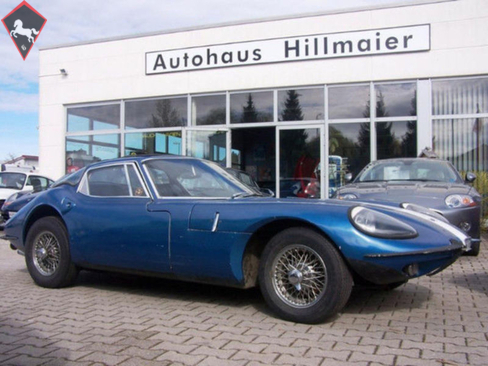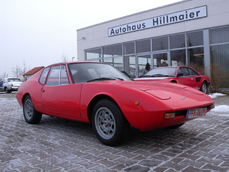Marcos Mantis seltener Linkslenker** 1966
General description :
Das Fahrzeug ist unverbastelt
weitere Informationen auf Anfrage !
SCHWEIZ-IMPORT
Finanzierung - mit oder ohne - Anzahlung, sowie Inzahlungnahme Ihres alten Fahrzeuges möglich!
Wir haben ständig zwischen 60 und 90 gebrauchte Fahrzeuge im Angebot unter
http://www.auto-hillmaier.de
Besuchen Sie uns auch unter
http://www.classiccars-ffb.com - Ihr Spezialist für exclusive Fahrzeuge.
Unsere Öffnungszeiten:
Mo-Do von 8:30 bis 18:00 Uhr, Fr von 08:30 bis 17:00 Uhr und Sa von 9:00 bis 12:00 Uhr.
Sprechen Sie mit uns - wir beraten Sie gerne!
Inseratsfehler, Zwischenverkauf und Irrtümer vorbehalten.
1966 Marcos Mantis seltener Linkslenker** is listed for sale on ClassicDigest in Liebigstrasse 2DE-82256 Fürstenfeldbruck by Autohaus Hillmaier for €33333.
Car Facts
Car type : Car Make : Marcos Model : Mantis Model Version : seltener Linkslenker** Engine size : 1.5 Model Year : 1966 Sub type : Coupé Location : Liebigstrasse 2DE-82256 Fürstenfeldbruck Vehicle Registration : Undefined
33333 €
Other cars listed for sale by this dealer
About Marcos
Marcos, the quintessential British cottage industry, a tale spun with wood and wonder. Let's embark on a journey through the history of Marcos and explore the narrative of its unique models.Act 1: The Wooden Wonder (1959-1971)
In the late '50s, brothers Jem and Denis Marsh decided to craft their own niche in the automotive world. What set Marcos apart was its bold use of wood in the chassis, giving birth to the term "Wooden Wonder." The lightweight yet sturdy wooden frame became a hallmark of Marcos cars.
Models of Note:
Marcos GT (1964): The debutante. A sleek, low-slung coupe that turned heads with its wooden frame and impressive performance.
Marcos 1800 (1967): A more powerful iteration, proving that beneath the wooden exterior beat the heart of a true sports car.
Act 2: Racing Prowess and Innovations (1971-1980)
Marcos delved into racing, solidifying its reputation on the track. The brand's commitment to innovation was evident in models like the Mantis, which featured a pioneering bonded-in windscreen.
Models of Note:
Marcos Mantis: A racing legend. Its aerodynamic design and technological innovations made it a force to be reckoned with on the racetrack.
Act 3: Revival and Modern Era (2000s)
After a brief hiatus, Marcos resurfaced in the early 2000s, blending classic charm with modern engineering.
Models of Note:
Marcos TSO (2004): The modern reincarnation. With a lightweight chassis and powerful engines, the TSO paid homage to its wooden heritage while embracing contemporary performance standards.
Finale: The Legacy Lives On
While Marcos may not be a household name, its legacy endures in the hearts of enthusiasts who appreciate the artistry of wooden craftsmanship and the audacity to challenge automotive norms.
In the annals of British automotive history, Marcos stands as a testament to the spirit of innovation, a wooden wonder that left an indelible mark on the roads less traveled.



















